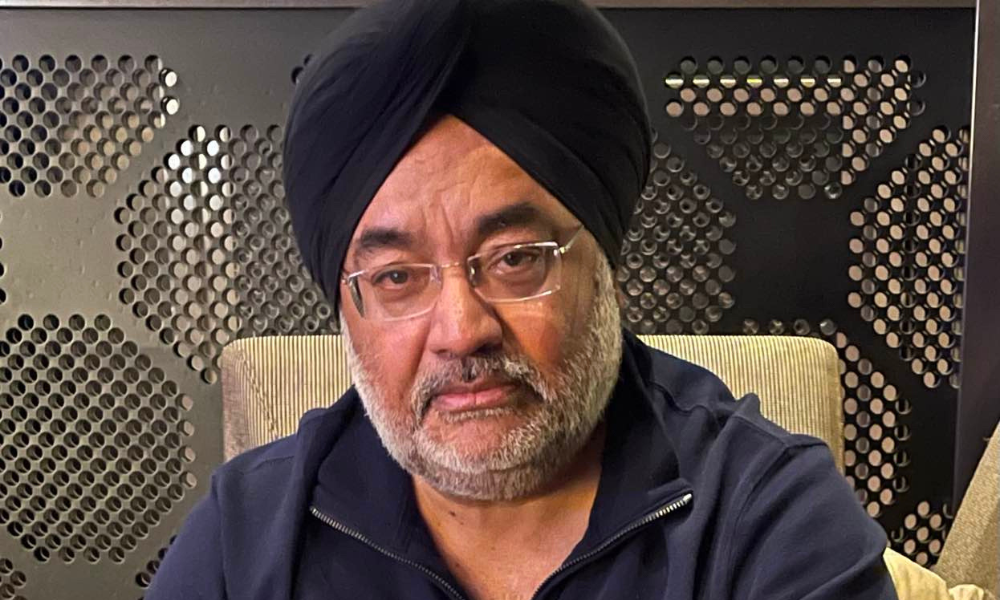Chill to get the deal? Industry experts debate the best approach

Investing in development is not for the faint hearted, it seems. As Saam Lowni (pictured left), points out - juggling timelines, funding issues, contractor headaches, cost overruns and exit worries, all create pressures for those heading up these projects. But Lowni, who is founder of brokerage Merryoaks Finance, suggests that pushing too hard and too fast for answers from lenders, can sometimes backfire – and potentially break the very deal investors are trying to save.
Lowni, who is himself an investor, developer and landlord, acknowledges it’s hard to accept, particularly when you’re the one counting on finance. “It sometimes really can be like treading through treacle or quagmire of sinking sand desperately trying to make it to the other side,” he explained. “But there is a point where leaning too hard on a lender, chasing updates every few hours, demanding or expecting progress before the process allows, actually starts to backfire.”
Lenders are cautious by nature, Lowni notes. “In this environment, with increasing regulation, anti-money laundering checks, and compliance scrutiny, too much noise raises red flags,” he said. “I’ve seen deals wobble purely because someone pushed too hard at the wrong moment. The worst-case scenario? The lender gets cold feet - they pull out.”
Lowni emphasises that the best borrowers he works with know this. “They still chase, they still care, but they understand the difference between momentum and pressure,” he said. “They lean in where it helps, and they hold back where it matters. Once doubt creeps in, it's hard to reverse. Let the process run - we'll keep it moving. But let's not blow the deal because we tried to shortcut something that demands time and clarity.”
Is Saam Lowni right when he suggests it is a delicate balancing act chasing funders for a decision – and, if so, how can you ensure that your attempts to get an answer don’t alienate those who hold the purse strings?
Ying Tan (pictured second from left), CEO of digital broker Habito, absolutely agrees with Lowni’s argument that there’s a real art to getting the balance right in pursuing lenders for updates. “Securing funding is as much about building trust as it is about presenting a strong deal,” Tan commented. “Coming in too aggressively can risk spooking lenders, especially on complex or structured cases where collaboration is key. You want the lender to feel like a partner, not like they’re under siege.”
He advised: “It’s perfectly possible to be assertive without being abrasive. That means being proactive, professional, and clear on the strengths of your project while also respecting the lender’s constraints and risk appetite. The best outcomes tend to come when both sides feel heard and understood. So, yes, sometimes chill really does trump charge. A confident but considered approach shows experience, credibility, and long-term thinking - and that’s exactly what lenders are looking for.”
While agreeing with Lowni’s suggestion that investors and developers need to tread carefully, Simon Michael (pictured second from right), a senior BDM of property finance at Momenta Finance, believes there are times when you need to push through. “Most development deals sent to lenders have not had the numbers run through properly,” Michael said. “While the developer will have their own appraisal with everything calculated, usually lender debt is priced at 8%. Most development pricing is around 11 - 13%, plus arrangement fees, exit fee, monitoring surveyor costs etc. That could take a potential profit level from 20% to under 10%, which are then not supportable by most lenders. Some brokers are very good at calculating this and collecting all potential red flags before sending to a lender, and one lender’s red flag is a another’s green flag. If a developer needs to move quickly to secure a site then by all means push on, but be prepared to answer lots of questions to make the lender comfortable.”
READ MORE: BTL blow: Forecast for rental growth downgraded
A fine line between being committed or seeming overly aggressive
Adviser Aatif Fazal (pictured right), a commercial finance specialist, believes there is a fine line between showing commitment on behalf of a client and coming across as desperate or overly aggressive. “Lenders are extremely cautious in today’s market,” Fazal said. “They are not just assessing the deal but the client as well. So if someone seems too pushy it can raise red flags in the underwriters’ eyes. I think it comes down to how well you, as a broker, package the deal to present it to potential lenders.” He added: “It is better to ‘chill’, to let the quality of the deal to do the talking, as well as your credibility within the market. “

From his own experience of overseeing deals, broker Bob Sigh (pictured above, inset), director of Chess Mortgages, considers development funding to be on a different level from standard bridging. “Pushing lenders too hard may be counterintuitive and the broker risks losing the deal altogether, by virtue of a disappointed client,” Singh said. “It’s knowing who will do what deal at the best price and deliver the deal. This is where experience and exposure to the market comes into play. Fundamentally the information required by most lenders is identical. It’s the underwriting, pricing, costs and risk appetite that varies. Experienced brokers and lenders will know what information and metrics to provide to secure a deal.”.

Sagheer Malik (pictured above inset), group chief commercial officer and managing director of retail finance at fintech Offa, said that as an Islamic home finance provider it places a strong emphasis on ethical dealing and mutual benefit - so its approach and tone matter. “If the proposal is solid, it will speak for itself,” Malik said. “It’s far better to engage with clarity and professionalism than to risk scaring off finance providers with high-pressure tactics. A respectful, collaborative attitude builds confidence and trust, which ultimately leads to better outcomes for both parties.”



